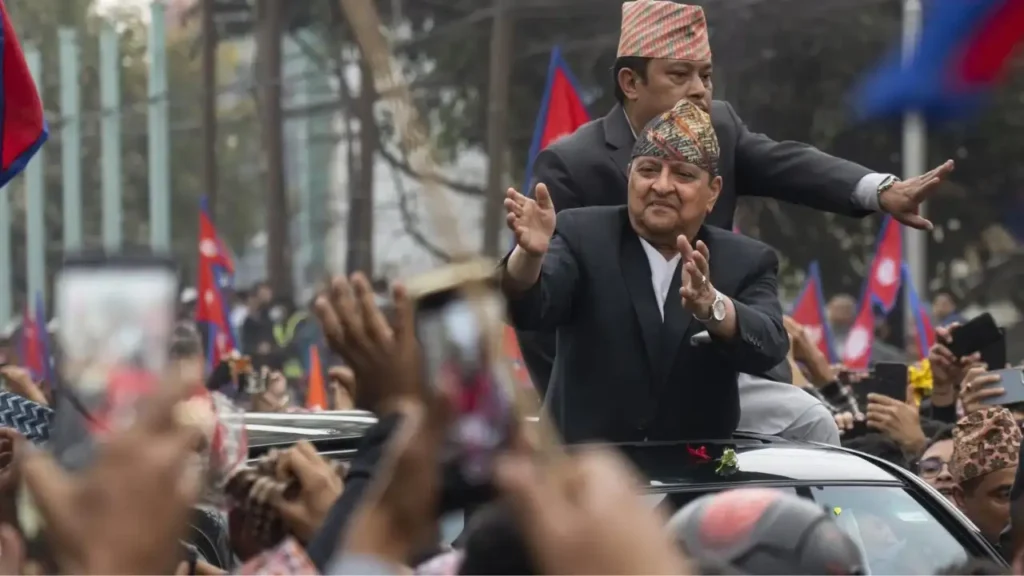A New Wave of Monarchist Sentiment
In a stunning turn of events, Nepal — a republic for nearly two decades — is witnessing a strong surge in public support for the return of the monarchy. Across Kathmandu and other major cities, thousands have taken to the streets waving Nepalese flags and portraits of former King Gyanendra Shah, demanding the restoration of the Hindu monarchy that once symbolized unity for the Himalayan nation.
The movement, which began as small rallies, has quickly gained momentum. Recent estimates put crowd sizes in the tens of thousands, and some local sources suggest numbers could be even higher. The former King’s arrival in Kathmandu earlier this year was met with scenes reminiscent of a royal homecoming, complete with chants, music, and flowers strewn across his path.
Clashes, Curfews, and Casualties
While the return of monarchist sentiment has been largely peaceful, not all gatherings have remained so. Tensions boiled over on March 28th, when a massive rally in Kathmandu’s Tinkune area ended in violence. Protesters breached police barricades, leading to a heavy-handed response from security forces, including the use of tear gas and rubber bullets.
Tragically, two people lost their lives — including a journalist — and more than a hundred were injured. In the aftermath, the government imposed a strict curfew and arrested over a hundred protestors, including several rally organizers.
Why Now? Understanding the Dissatisfaction
Many Nepalis feel that the political system born out of the 2006 people’s movement has failed them. Since the monarchy’s fall in 2008, Nepal has had 13 different governments, with widespread reports of corruption, inefficiency, and political infighting. Amid a deepening economic crisis and frequent blackouts, public patience appears to have worn thin.
A 2024 Himalmedia survey reflected this growing frustration, revealing that nearly half of the population now favours reinstating Nepal as a Hindu state with a constitutional monarchy. To many, the monarchy represents stability, tradition, and national pride — values they believe are missing from the current leadership.
Former King Gyanendra’s Quiet Yet Powerful Presence
Unlike in previous years when he stayed largely silent, former King Gyanendra Shah has adopted a more visible role — though still careful not to overtly engage in political campaigning. His public appearances have been subtle but symbolic, striking a chord with many disillusioned citizens.
However, the government has not taken kindly to the King’s resurgence. Authorities have reduced his security detail, fined him for damages related to the protests, and even initiated proceedings to revoke his passport. Prime Minister K.P. Sharma Oli has gone so far as to accuse Gyanendra of “inciting violence” and engaging in activities “akin to terrorism.”
Despite the pressure, Gyanendra has remained composed, neither endorsing the protests nor condemning the government outright — a move some interpret as a shrewd strategy to keep public sympathy on his side.
The Road Ahead: Change or Return to Tradition?
For all the fervor, political analysts caution against assuming that a royal restoration is imminent. While support for the monarchy has grown dramatically, the republican system still holds strong support among many sectors of society, especially the younger generation and urban elites.
Moreover, the current political establishment is unlikely to allow a shift back to monarchy without a fierce legal and political battle. Constitutional amendments, national referendums, and international scrutiny would all be massive hurdles.
Still, the message from the streets is undeniable: many Nepalis are tired of political instability and crave leadership they can trust. Whether that comes through a revived monarchy or a reformed republic remains the biggest question facing Nepal today.
Conclusion: A Nation Standing at a Crossroads
Nepal finds itself at a critical juncture. The calls for the King’s return are not merely nostalgic — they reflect a deeper yearning for stability, cultural pride, and effective governance. Whether the monarchy actually returns or not, it is clear that Nepal’s political leaders can no longer ignore the voices rising from the streets.
The old wounds of the past have reopened, and the coming months will determine whether Nepal moves towards a new beginning — or returns to a chapter many believed had been closed forever.


1 Comment
It feels like Nepal is really at a turning point—people just want peace, stability, and a future they can trust.